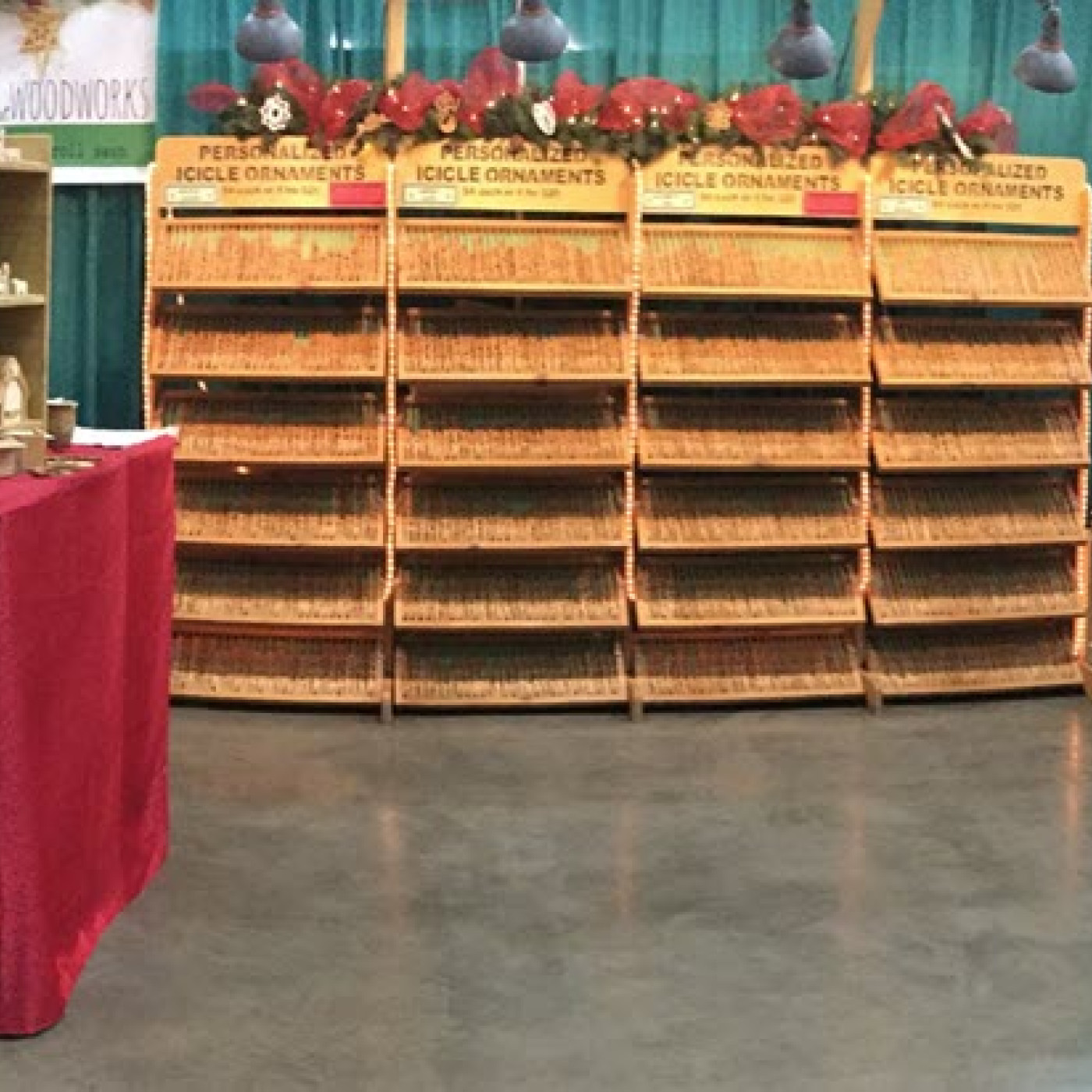Design Your Booth for an Indoor Show Tips From a Promoter To Make the Most of This Space
The best design for an indoor booth differs from vendor to vendor.
Artists must consider the shape, size, materials, and other factors of their products when designing their layout.
It is crucial to have the right amount of space to properly show their artwork. Jewelers may opt for glass display cases to present their assortment of pieces, while painters may line their walls with their work to maximize space efficiency.
The best location for a booth may be more easily determined. Corner booths in a linear, indoor floorplan are often the best spots.
Facing two aisles at once allows artists to utilize their space to the fullest — generating more foot traffic and increasing the likelihood of catching the eye of
a passerby. The goal is to create a small showroom that entices people to step into the booth.
Design Ideas
Artists can make the most of their floor space by integrating their artwork into their layout and design. In larger spaces, they can use tables, pedestals, shelves, and sometimes even pieces of their art to create a natural flow of traffic through the booth. This strategy can also be implemented by artists with 3D work who want to allow customers to see every angle of their work.
In a smaller space, artists may opt to use tall shelves to minimize the space their products take up and allow for more foot traffic. Artists with 2D work, such as paintings and photographs, will similarly use this strategy by mounting their work to the walls. The goal of artists should be to discreetly — yet deliberately — draw the attention of customers to the goods they want to show off most in the most favorable way possible.
Create an Environment
The best way to stand out at a show is to create a warm, inviting booth environment that shows pride in the work displayed. An artist should keep the space uncluttered; use clear, concise signage; and have simple decorations.
Place eye-catching pieces at the front of a booth to draw interest, so potential buyers stop to get a closer look. Signage should highlight the quality of the art, with descriptors such as custom made, one of a kind, or unique materials.
Artists should avoid cheapening their work with buy-one, get-one sales, or any similar discounted offerings. A particularly powerful tool is a kinetic element in the booth, such as the artist demonstrating the craft.
An often-overlooked factor for creating this environment is the artist’s demeanor. Artists represent the booth as much as their work does and should be approachable. Avoid extended periods of time looking down at a phone or having a disinterested, apathetic look on your face.

Highlight the Details
Indoor shows have overhead fluorescent lights that provide a basic light level to a booth. Only with smaller, more detailed lighting can artists elevate their displays.
Artists should bring their own sources of light to indoor shows. They should think about what will make their art look best and highlight certain aspects of their work by the way they position, focus, and frame their lights.
Outdoor venues are often at the mercy of Mother Nature, and indoor venues allow for a more technical side of lighting. It is a mistake not to capitalize on this opportunity.
Be Approachable
Where an artist sits or stands in the booth impacts traffic flow and how inviting the space is. To allow for a more casual browsing experience, artists should place themselves toward the back or along the side of the booth — facing out toward the attendees.
The artist is then available if needed but not hampering the customer’s independent browsing experience. This dynamic may change if the artist is working on a piece or performing a demonstration.
In that case, the artist’s position should be toward the front of the booth to draw as many eyes as possible from the aisle and show a willingness to engage with potential customers.
Consider Sound
If artists want to limit the amount of noise in their space, a wall system type of booth helps absorb sound. They could opt to use their products for soundproofing.
For example, in a booth selling clothing, line the walls with the wares. This allows the fabric, wool, or other material to dampen the noise that enters and leaves the booth, while also showing off the work. In most cases, the venue’s event management controls acoustics.
